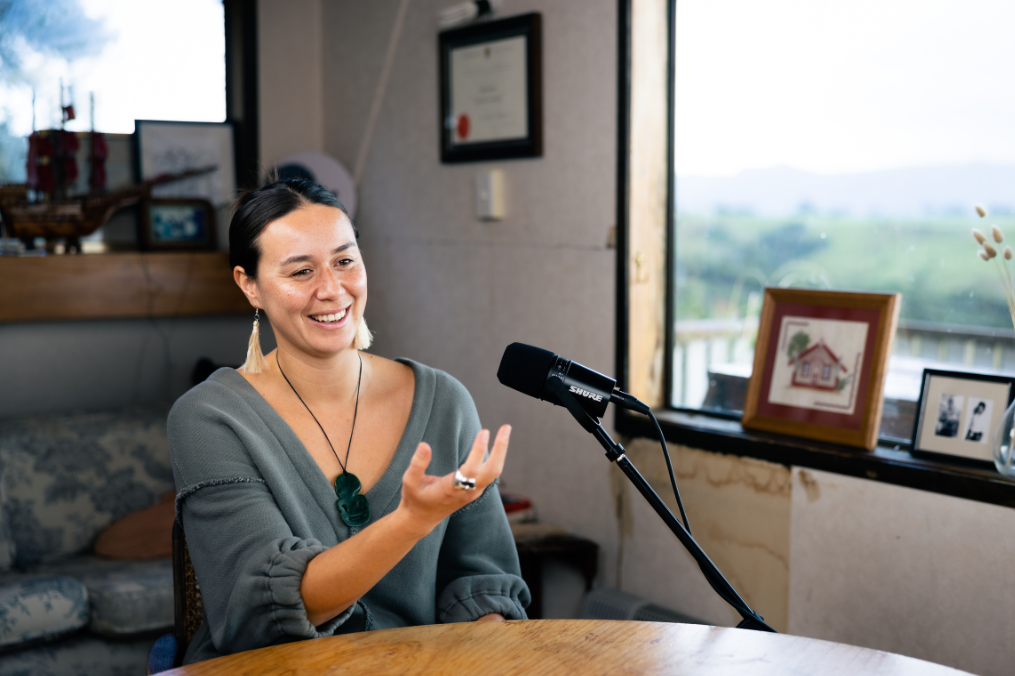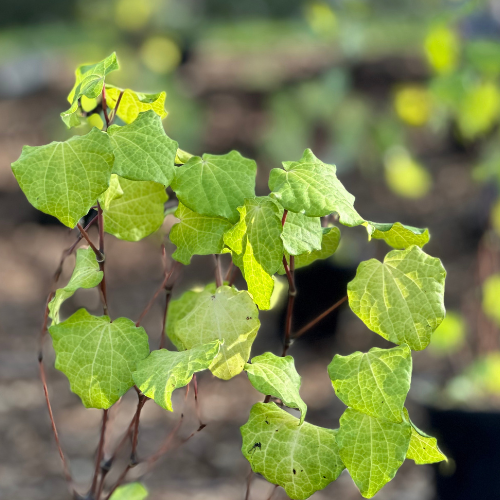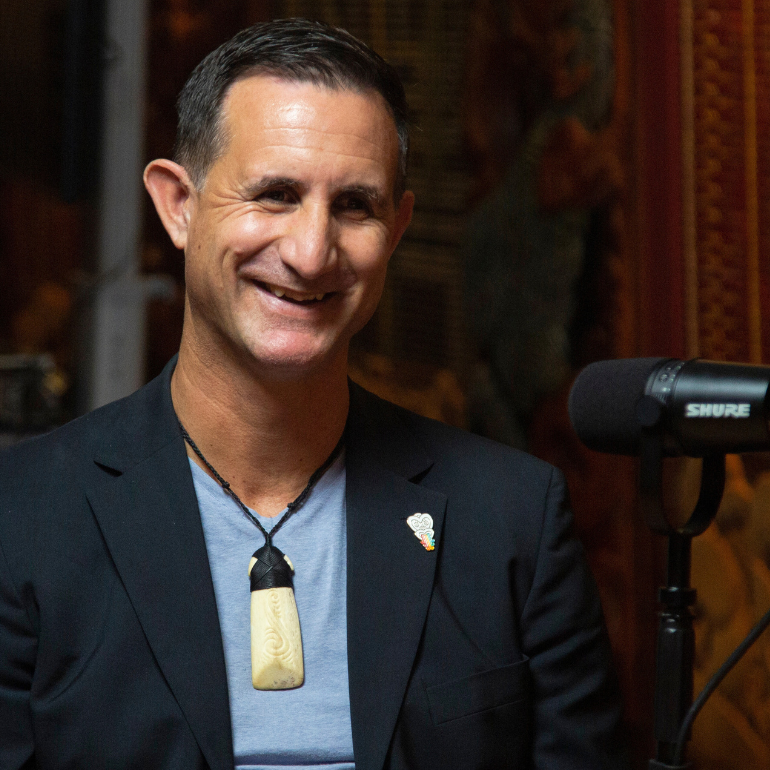At the edge of Tāmaki Makaurau Auckland city, stretched out between Manukau Harbour and the Tasman Sea, sits Āwhitu Peninsula. Just to the south lies the mouth of the tupuna river Waikato, once a highway that connected iwi all along the west coast of the North Island.
From her home in Āwhitu, Te Huia Taylor (Ngaati Te Ata Waiohua) looks out onto the same stretch of sky and sea her ancestors once did. But, she concedes, it is a much changed place from the time when they lived on its shores.
In 1864, iwi and hapū that occupied the southern city fringe, who had been responsible for feeding and caring for the new settlers of Auckland, were wrongfully punished for their hononga (connection) to the Kiingitanga (Māori King movement) during the Waikato wars. Governor Grey ordered the hundreds of waka around Manukau harbour to be smashed or burned.
Te Huia says after their waka were destroyed, and urbanisation slowly dwindled the harbour’s resources, her people began to lose their mātauranga moana.
“It wasn’t just the taking of the physical asset. It meant that we could no longer practise the mātauranga behind that. We were a water people, and we still are ā-wairua nei, but the tool with which we transferred knowledge was taken.”
She credits her pakeke from Ngāti Te Ata who through their iwi kura kaupapa helped her and her whanaunga to reconnect with some of those lost practises. The school’s learning programme included activities like fishing, whitebaiting, and paddling their surrounding waterways. “We recognised the need to reoccupy the waters, not just to have a physical presence but so that we could observe. - In the future, we’ll be able to respond and make a change before we lose our pātaka kai. That’s the reality we’re facing as an iwi.”
With this grounding, a tongikura (a well known saying by an ariki or paramont chief) from Kiingi Taawhiao helped Te Huia decide where her future lay: “E kore teenei whakaoranga e huri ki tua o aku mokopuna”The responsibility for revival must not pass beyond the time of my grandchildren.
“There’s two sides to that – to look at what my kaumātua started, and think, I’ve got to get that done in my lifetime... But also what do I want to start, to ensure my tamariki and mokopuna are better off?”
For her “taiao spaces” made the most sense – namely helping those with the power to influence change to embed kaitiakitanga principles in kaupapa that affect our environment.
She quotes another beloved whakataukī of her Kuia Nganeko: “Mā tātou anō ā tātou tikanga e arataki.” Only we ourselves can make things happen. “How do we make spaces as Māori, where we can do things how we want to, and how we’ve always done it? ”
In 2019, Taylor founded Paakaurua Consultants to assist central and local government in climate issues. Paakaurua worked on the Māori Engagement Plan for Auckland’s Climate Plan - Te Tāruke-ā-Tāwhiri, and the delivery of the rangatahi strategy. On this journey, she discovered many Māori don’t connect with the response to, or even the name ,‘climate change’.
If you were to go to a marae and ask, ‘Could you help with a climate action strategy?’, none of them would say ‘Oh I know how to do that.’ But if you ask them ‘How do we regenerate our awa, what have you observed that works?’ They would know. She adds that she’d like to see more wāhine Māori in leadership roles “to introduce that aspect of care, aroha and intuition into the response.”.

Te Huia observes that the process of working with local government is generally one of openness and a genuine desire to collaborate with tangata whenua. “But that said, the more I try to embed mātauranga Māori in Western systems, the more I reflect on whether it can truly be done.”
“Our ability to control the tikanga of the implementation is kind of taken away. I’ve definitely seen some good outcomes, but I think there would be amazing outcomes if councils and government could just trust Māori to run a fully embedded mātauranga Māori programme that stands alone.”
Te Huia remembers a period working at Auckland Council, when Mayor Phil Goff was seeking to officially announce a climate emergency in Tāmaki Makaurau. Many Tāmaki mana whenua representatives declined to support it.
“When I asked them why, they said, - ‘We’ve been in a state of emergency for the last 200 years… We’ve been telling them for years and years, something is wrong with our taiao.’ To only declare an emergency when it’s finally affecting [everyone else] was mamae for Māori.”
It's because of this long history of neglect, as well as the wealth of knowledge and skill embedded in mātauranga Māori, Te Huia reiterates that nothing less than full autonomy is required to make lasting change.
Luckily, she says, the next generation are ready for the challenge. As a board member for Te Ara Rangatahi, a Ngaati Te Ata trust founded by the rangatahi of her iwi, Te Huia has witnessed the aspirations of young people for te taiao.
Te Huia says we are only now seeing the full benefits from the Kōhanga reo (Māori language preschools) and kura kaupapa (Māori language schools) movements 40-50 years on and their efforts to reclaim reo and tikanga. There are now raukura (kura Māori graduates) grounded in who they are as Māori moving into leadership positions across all sectors. She is excited by the potential influence Māori will make as they continue to see this new wave of leaders who are the embodiment of a vision set by pakeke (adults) and kaumātua when they marched to Parliament 48 years ago.
She also references a Te Hira Pū-ao conference she attended in Rotorua earlier this year, where rangatahi came from across the motu to share mātauranga around kaitiakitanga.
“It was full of rangatahi Māori ready to make a change, to fight and to recognise that Māori and indigenous knowledge is the answer,” she says with a smile.


